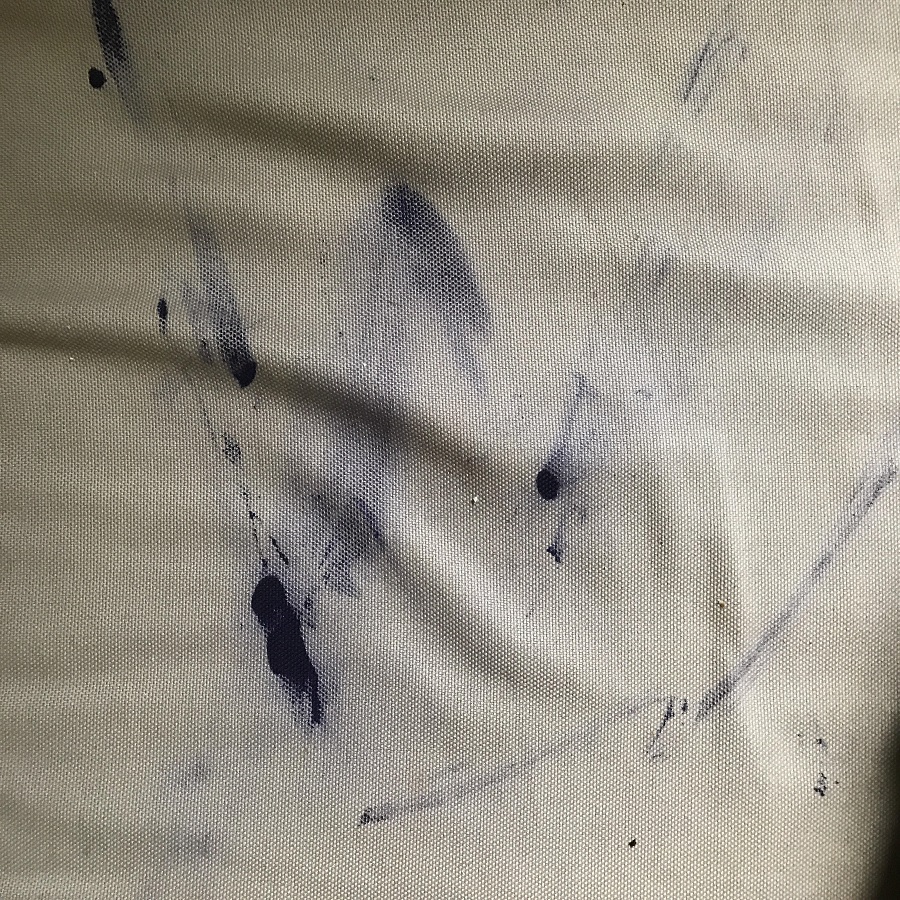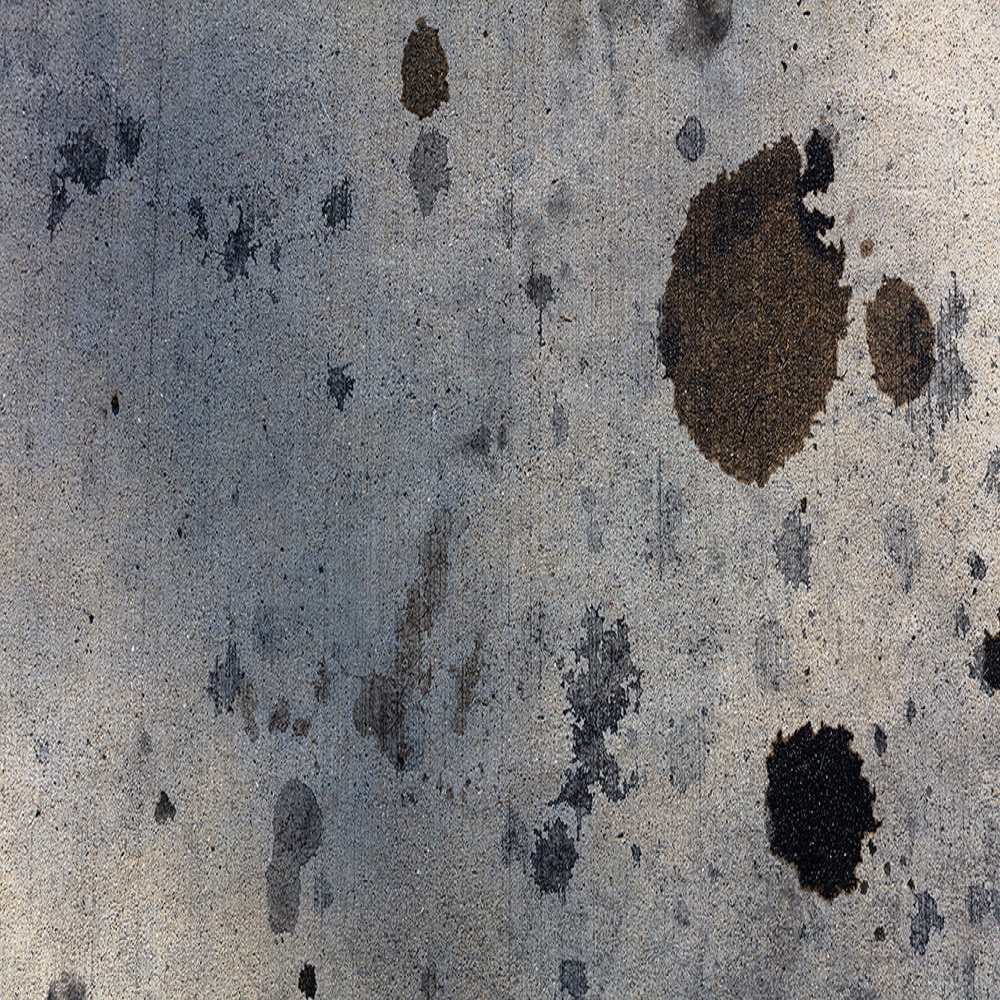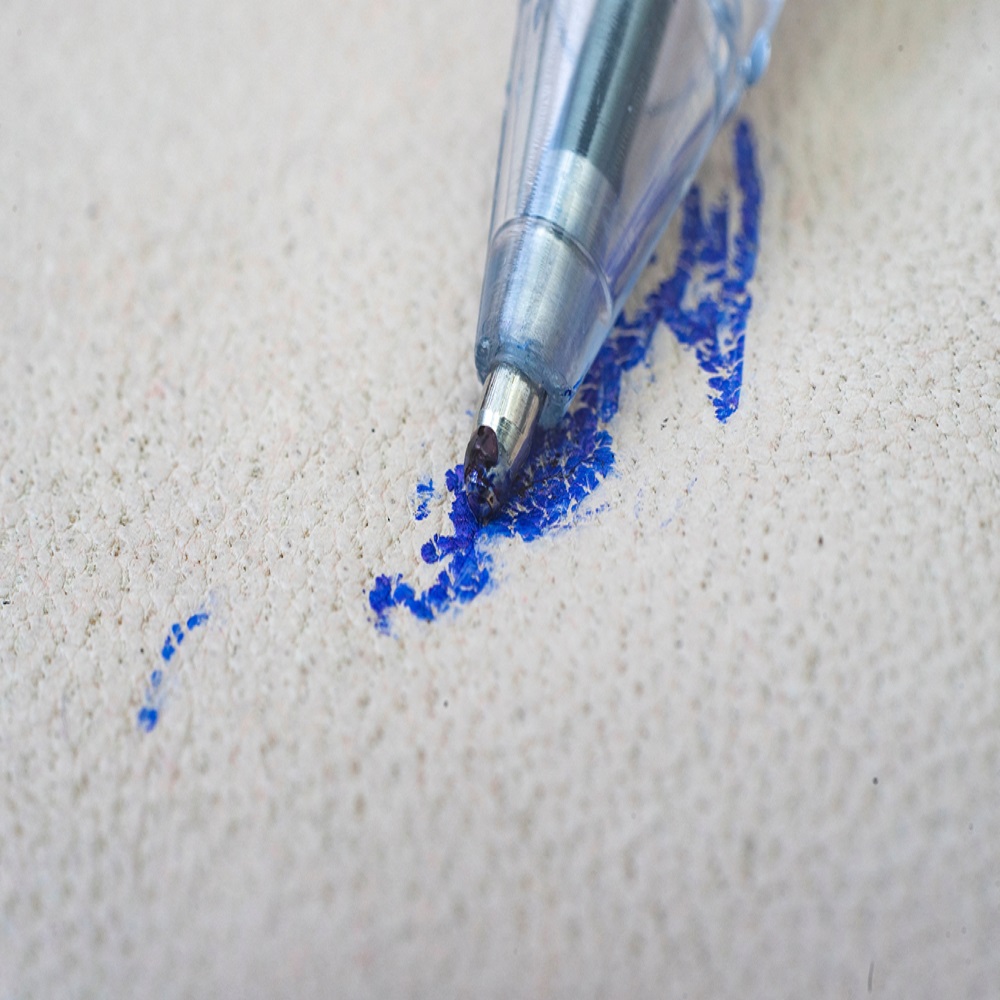Overview of Ink Removal from Fabric Sofas
When an unfortunate ink spill happens on your fabric sofa, don’t panic. Understanding the process for ink removal is key to restoring your furniture. Start by identifying the type of ink and the material of your sofa. This helps determine the best cleaning method. Whether using rubbing alcohol, a dish soap and vinegar solution, or white vinegar and detergent, each method has its own set of steps. It’s important to act fast, as fresh ink stains are easier to treat than set-in ones. Always test your chosen cleaning solution in an inconspicuous area first to ensure it doesn’t harm the fabric. With patience and the right technique, you can effectively tackle ink stains. Prevent future incidents by setting rules about using pens on the sofa and considering sofa covers for protection.
Common Types of Ink Stains on Sofas
Ink stains on sofas can come from many sources. Common types include ballpoint pen ink, gel ink, and marker ink. Each type has unique properties that can affect how you remove them. Ballpoint pen ink, often oil-based, requires specific solvents. Gel ink, with its thick and pigmented nature, might need alcohol-based cleaners. Marker inks, especially permanent markers, are the toughest and may need professional cleaning interventions. Knowing the ink type helps choose the right removal method, ensuring the sofa’s fabric stays safe and clean. Always identify the ink type before proceeding with stain treatment.

Pre-Treatment Steps for Ink Stain Removal
Before attempting to remove ink from a fabric sofa, follow these pre-treatment steps. They help prepare the stained area, increasing the chances of successful ink removal.
Identify the Type of Ink Stain
First, identify the type of ink. Is it from a ballpoint pen, a gel pen, or a marker? Each type may need a different approach.
Check the Fabric Type
Check your sofa’s fabric type. Look for cleaning codes if available. Codes indicate what cleaners you can safely use.
Test the Cleaning Solution
Always test your cleaning solution on a small, hidden part of the sofa. Make sure it does not damage the fabric.
Blot, Don’t Rub
Use a clean cloth to gently blot the stain. Avoid rubbing, which can spread the ink deeper into the fabric.
Following these pre-treatment steps ensures that you’re equipped to tackle ink stains effectively without harming your sofa.
Method 1: Using Rubbing Alcohol
When ink stains mar your fabric sofa, rubbing alcohol can be your savior. This solvent is perfect for tackling ballpoint and gel ink soils with ease. It is readily available and won’t break the bank.
Detailed Steps for Rubbing Alcohol Method
- Start by blotting excess ink with a clean cloth. Take care not to rub the stain.
- Moisten another cloth with rubbing alcohol; dab this onto the ink spot.
- Continue blotting with the alcohol-soaked cloth until the ink lifts off.
- Once the stain fades, rinse the area with water and blot it dry.
Remember to use a new section of the cloth for each blot to avoid spreading the ink. If any stain lingers, repeat the process. Check your fabric for any sign of damage. Always test a small, unseen section before starting. With caution and this technique, ink stains should come right out of your fabric sofa.

Method 2: Dish Soap and Vinegar Solution
Detailed Steps for Dish Soap and Vinegar Method
To effectively remove ink from your fabric sofa using a dish soap and vinegar solution, follow these straightforward steps:
- Create the cleaning mixture by combining one part dish soap with two parts vinegar.
- Stir the solution well in a small bowl or container.
- Dip a clean, white cloth into the mixed solution.
- Gently blot the ink-stained area with the soaked cloth.
- Continue the blotting process until you see the ink stain fading.
- After the stain is removed, rinse the area with clean water.
- Use another dry cloth to blot the area dry.
This method is gentle on most fabric types and effective for many ink stains. Always do a patch test in an inconspicuous area before applying the solution widely. By following these steps, you can safely treat ink stains on your fabric sofa without causing damage to the material.
Method 3: White Vinegar and Detergent
When battling ink stains, white vinegar paired with detergent is a powerhouse. Here’s how to use this effective method:
Detailed Steps for White Vinegar and Detergent Method
- Mix equal parts of white vinegar and liquid detergent in a bowl.
- Stir the solution until it’s well blended.
- Using a clean, soft cloth, apply the mixture to the ink stain.
- Gently tap the stain with the cloth, don’t rub.
- Keep tapping until the ink starts to lift off the fabric.
- After the stain is gone, rinse the area with cool water.
- Pat the sofa dry with another clean cloth.
White vinegar, a natural cleaner, works great with detergent to break down ink. Remember to do a small test on your sofa to avoid any fabric damage. If the stain persists, you may want to repeat these steps. Or, consider calling a professional. This method is safe for many fabrics and can save your sofa from ink woes.
Tips for Preventing Future Ink Stains on Sofas
To help prevent ink stains from recurring on your fabric sofa, consider these practical tips:
- Establish Rules: Set clear guidelines for what activities are allowed on the sofa, particularly with regard to using pens and markers. This simple rule can drastically reduce the chances of accidental stains.
- Immediate Cleaning: In case of an ink spill, act quickly. Faster response increases the likelihood of completely removing the ink without it setting into the fabric.
- Use Sofa Covers: Sofa covers not only refresh the look of your furniture but also provide an additional layer of protection against stains. If an accident happens, you can easily wash the cover.
- Keep Cleaning Supplies Handy: Store suitable ink removal products nearby. Having them within easy reach ensures immediate action can be taken when ink spills occur.
- Regular Maintenance: Regularly clean your sofa as per the manufacturer’s instructions. A clean sofa is less likely to absorb new stains deeply.
By following these recommendations, you can maintain the pristine condition of your fabric sofa and enjoy a cleaner, more inviting sitting area.

Professional Solutions and When to Use Them
Sometimes, despite your best efforts with home remedies, stubborn ink stains refuse to leave your fabric sofa. This is when professional cleaning solutions come into play. Knowing when to call in the experts is crucial to avoid causing further damage to your furniture.
Assess the Stain Severity
Start by assessing how severe the stain is. If methods such as rubbing alcohol, dish soap and vinegar, or white vinegar and detergent haven’t worked, it’s time to consult a professional. Deep-set or larger stains often require more powerful cleaning agents that only professionals have access to.
Consider the Sofa Fabric Type
Your sofa’s fabric type also plays a significant role in deciding whether to opt for professional cleaning. Some delicate fabrics might not withstand strong commercial cleaning products. Professional cleaners offer tailored solutions that are safe for specific fabric types.
Evaluate Cost Versus Value
Weigh the cost of professional cleaning against the value of your sofa. If your sofa is expensive or holds sentimental value, investing in professional cleaning might be worth it. It’s usually more cost-effective than replacing a high-quality sofa.
When DIY Solutions Fail
If you’ve tried multiple methods and the ink stain is still visible, calling professionals is advisable. They have specialized tools and solutions that can effectively eliminate tough stains without damaging the fabric.
By knowing when to opt for professional help, you can maintain the appearance and longevity of your fabric sofa without risking unnecessary damage. Always choose a reputable cleaning service to ensure the best outcomes for your furniture.


